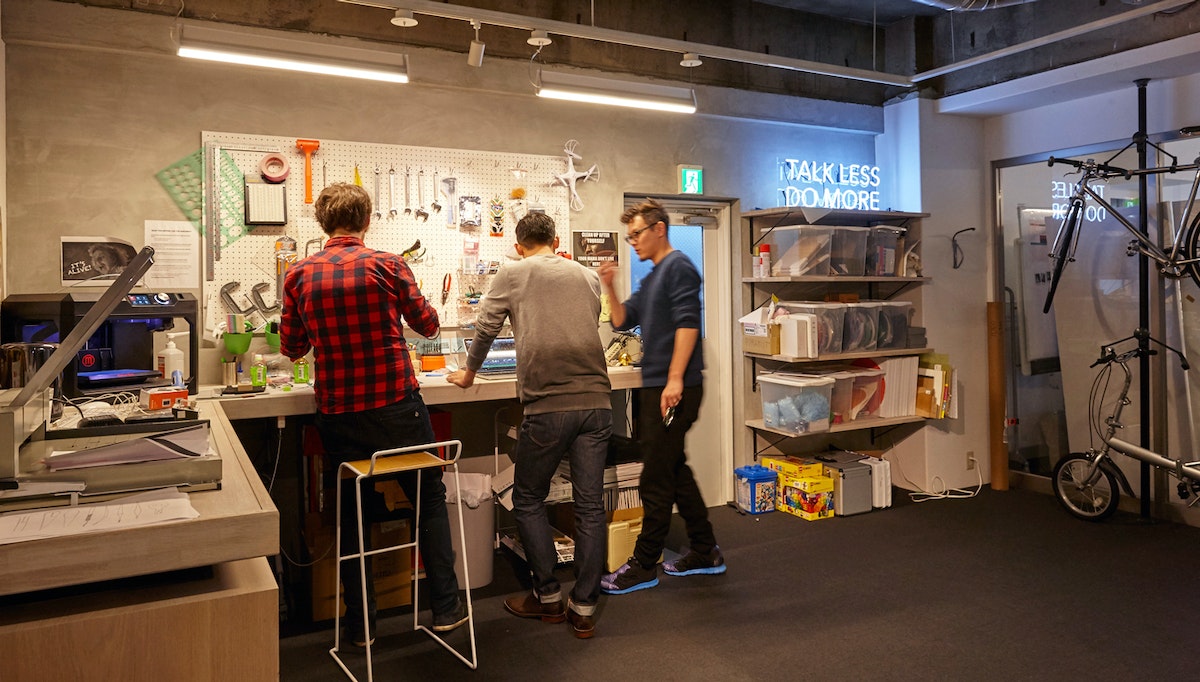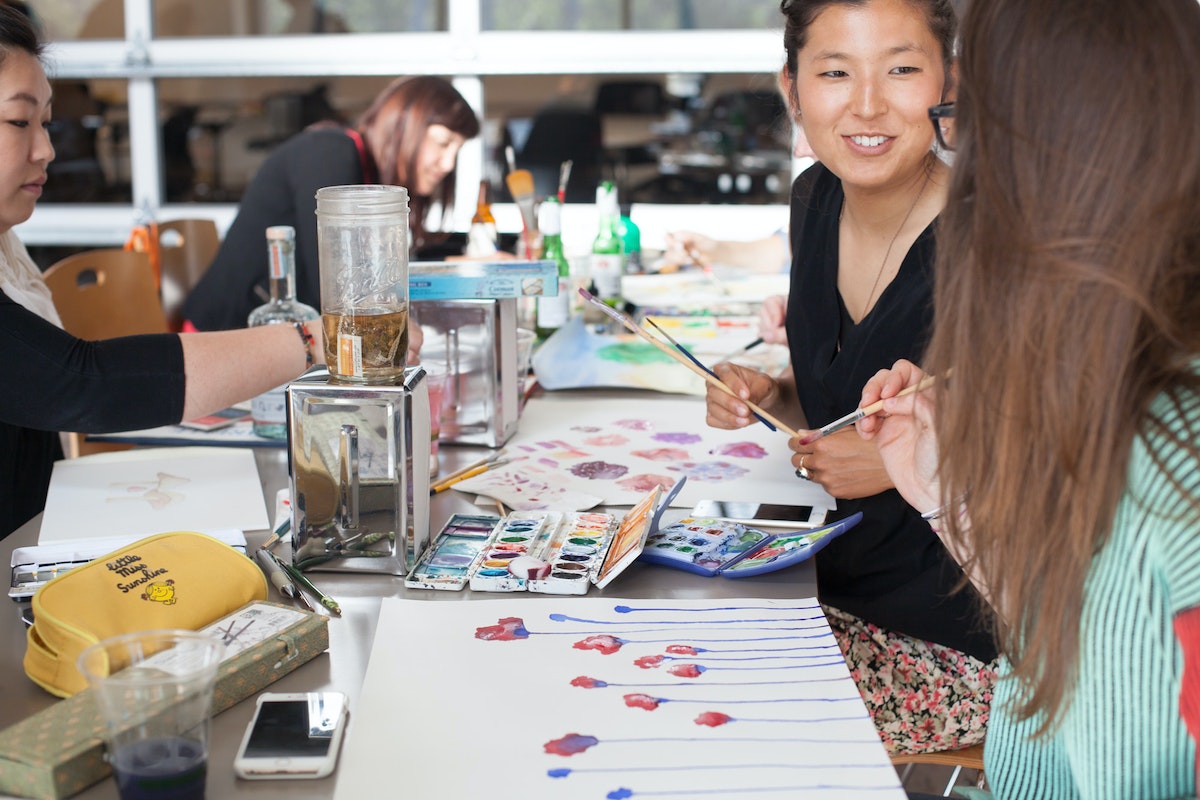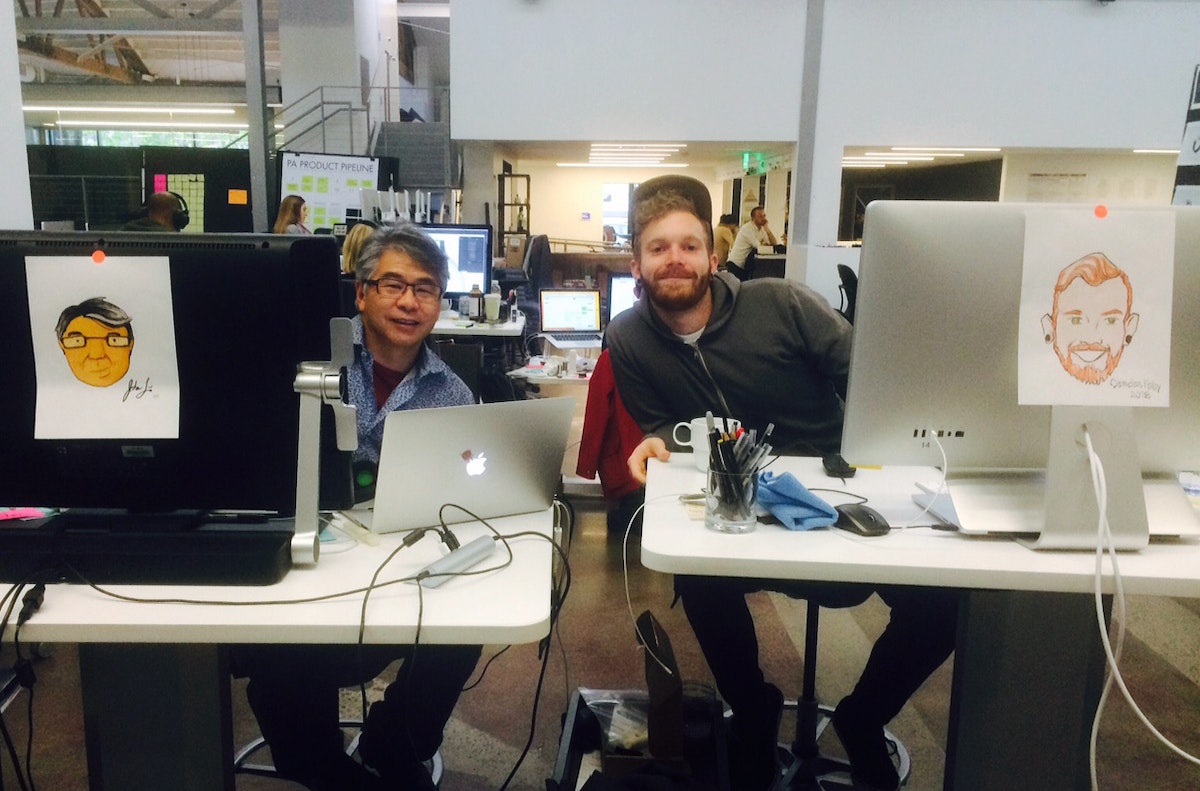13 Ways to Make Your Workspace More Creative

Many businesses are getting wise and ditching the one-size-fits-all flannel suit approach to the workplace. But do they have any clue what to replace it with? For a while, everyone wanted to make their office look like a children's playground. Today, the trend is to try to look like a coworking space or a coffee shop. But are those ideas future-proof? And do they actually create the conditions that creativity needs to thrive?
The short answer is not really. Though we agree that every office must be tailored to the specific needs of the people who work there and the kind of work being performed, we polled IDEO designers and found some universally winning environment designs that deliver a jolt of creativity. Here are 13 tips for how to supercharge your space:

1. Install a communal table or other gathering space
At General Assembly, there’s one giant table that can seat 30-plus right in the middle of the main space. Students, instructors, and staff gather round it to share ideas in an unstructured, organic way. Each campus around the world has their table made by community artisans with locally sourced materials, which helps remind people of the importance of place. —Danoosh Kapadia
At Disney Animation Studios, John Lasseter had the conference rooms in the center of the building torn down to make room for a coffee shop. The space served as a large space for folks to come together and collaborate. —Kat Chanover
2. Make things moveable
When people become glued to a particular place, their perspective stays glued, too. Put things on wheels, or having rotating desks allows people to meet new coworkers and invites collaboration. And don’t sit next to someone who does the same thing as you—if you’re an engineer, sit next to a designer. Physical silos are real. —Xin Xin
One of my favorite things about the d.school at Stanford is that the walls in most of the building can be moved and reconfigured. An open space can become a private project space in a matter of minutes (and vice-versa). —Katie Clark

3. Display your values
Placed all around the IDEO Tokyo office are key phrases projected in neon lights. Next to our Maker Space it’s "Talk Less, Do More"; in our lounge it’s "Make Others Successful"; next to the door before you exit it’s "Take Responsibility". Although these are just 3 of the 7 key IDEO values, the signs serve as a daily reminder of what we all believe in. —Mike Peng
4. Hide the clocks
OK, maybe not all the clocks. But consider introducing spaces where people can get a break from the cruel Master Time. Sometimes creativity needs constraints to flourish; sometimes it needs the freedom to take as long as it damn well pleases. —Lode Starstrom
5. Situate joy
In our project space, there is a drawer that only contains British chocolate of the most velvety quality. The team knows it's there. When that drawer opens... well, it's very exciting for everyone. Sometimes they even exclaim, "Milky Time!" Design your space to trigger moments of joy, or surprise, or ritual. —Alex Gallafent

6. Put creative tools in the way
When there are creative tools in the main space, more stuff gets made. Don’t silo the maker space. Out of sight, out of mind. In sight, in practice. —Clark Scheffy
7. Build a home-y kitchen
The kitchen should not feel corporate. It’s the nest where new ideas hatch! Pay attention to details: use real utensils and glasses, not plastic, have employees help wash dishes. And nothing signals a communal, homey feeling more than leaving the butter dish out! —Becky Bermont
8. Activate empathy
At Airbnb, the conference rooms are designed to be replicas of favorite rentals around the world. There’s a picture of the actual space at the entrance. That helps immerse you in the Airbnb customer experience, a great reminder that you’re there to make that experience better. —Kristin Kelly

9. Use nature to support well-being
At my former workplace, CookFox Architects, the firm incorporated the principles of biophilia into their office design. All 80 employees had a direct view to the outdoors, and natural light poured in from three sides of the office. Potted plants were placed in every possible place throughout the office, and there was a rooftop garden where they kept bees and plants that attracted butterflies and birds. Carpet, bathroom tiles, and paint were done in ocean-inspired colors, and decorative lighting structures mimicked patterns found in nature. Biophilic design is said to unburden our cognitive system, supporting it in collecting and recognizing information in the quickest and most efficient way, as well as generally supporting wellbeing. —Alisa Ahmadian
10. Cultivate permission
Allow employees to put stuff on the walls. It goes without saying: it's better to have things on the wall that you've created, versus expensive art you've paid someone else for. —Zach Hobbs
11. Provide spaces for projects
Clear space where workers can leave projects-in-progress without worrying about the mess. I wish every home and every workspace had this. In school maker labs (such as the Innovation Lab at Nueva School), I'm always pleased to notice big shelves for students' work-in-progress projects. —Sally Madsen

12. Introduce some play
Make C-level guys take themselves less seriously and more open to brainstorming by taking them slightly out of their comfort zone. I heard that in Jump Associates' meeting rooms, they have pilates balls instead of chairs. On the same theme, my father, who is an urban designer in Istanbul, installed swings in his studio to create an informal and playful space. He works with mayors on a daily basis, and you’ll see very traditional politicians swinging alongside young urban designers. —Nazlican Goksu
13. Think about a landscape of creative spaces
Create different spaces to match the task at hand. Three things are required to make this successful: abundant power sockets, quality wi-fi coverage, and agreements among employees of how to "use" the space. That way, no individual will attempt to claim a space long-term, and will instead facilitate everyone being in the exact right space at the exact right moment. —Lawrence Abrahamson

Subscribe to the IDEO newsletter
.jpg)



